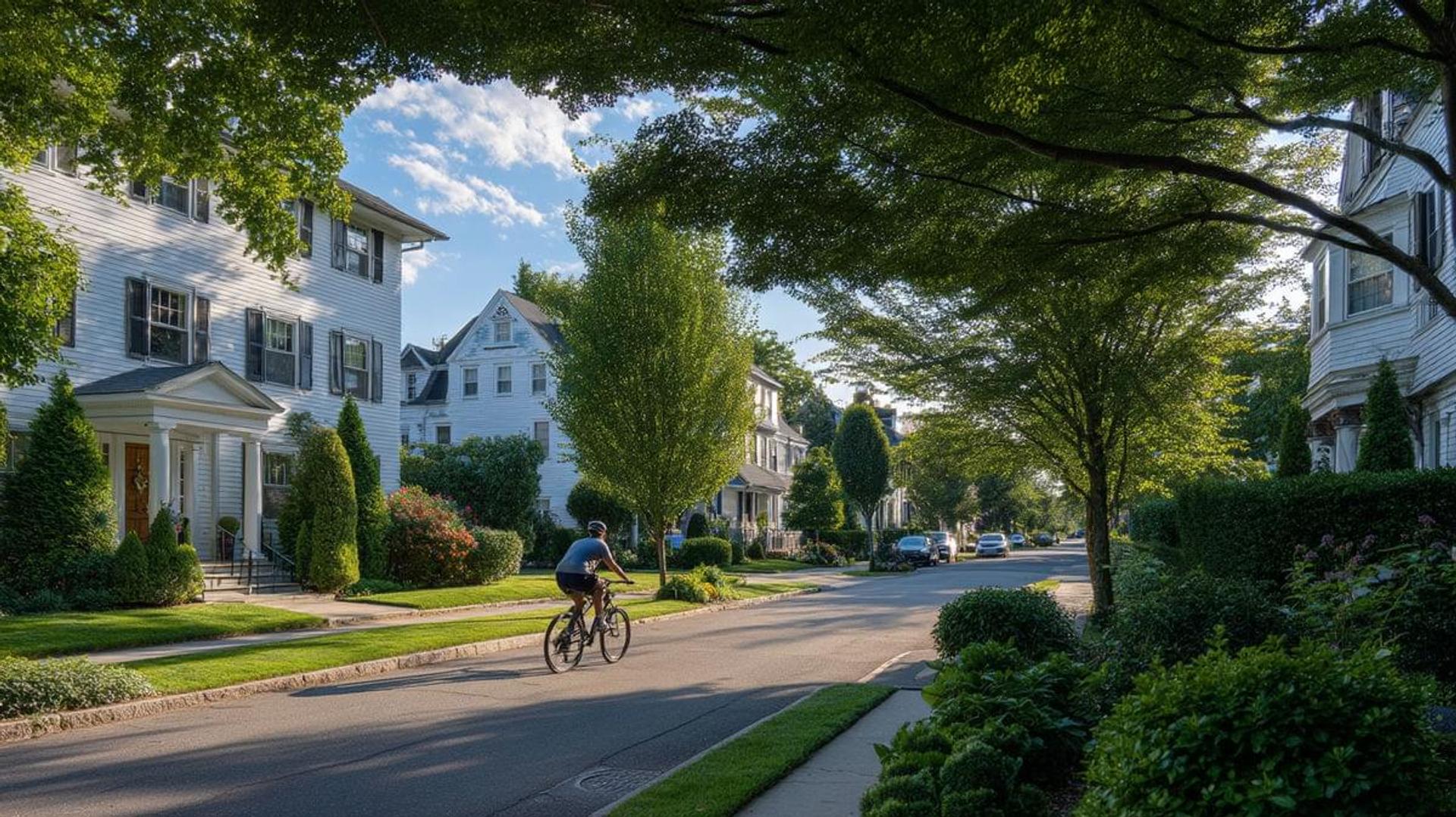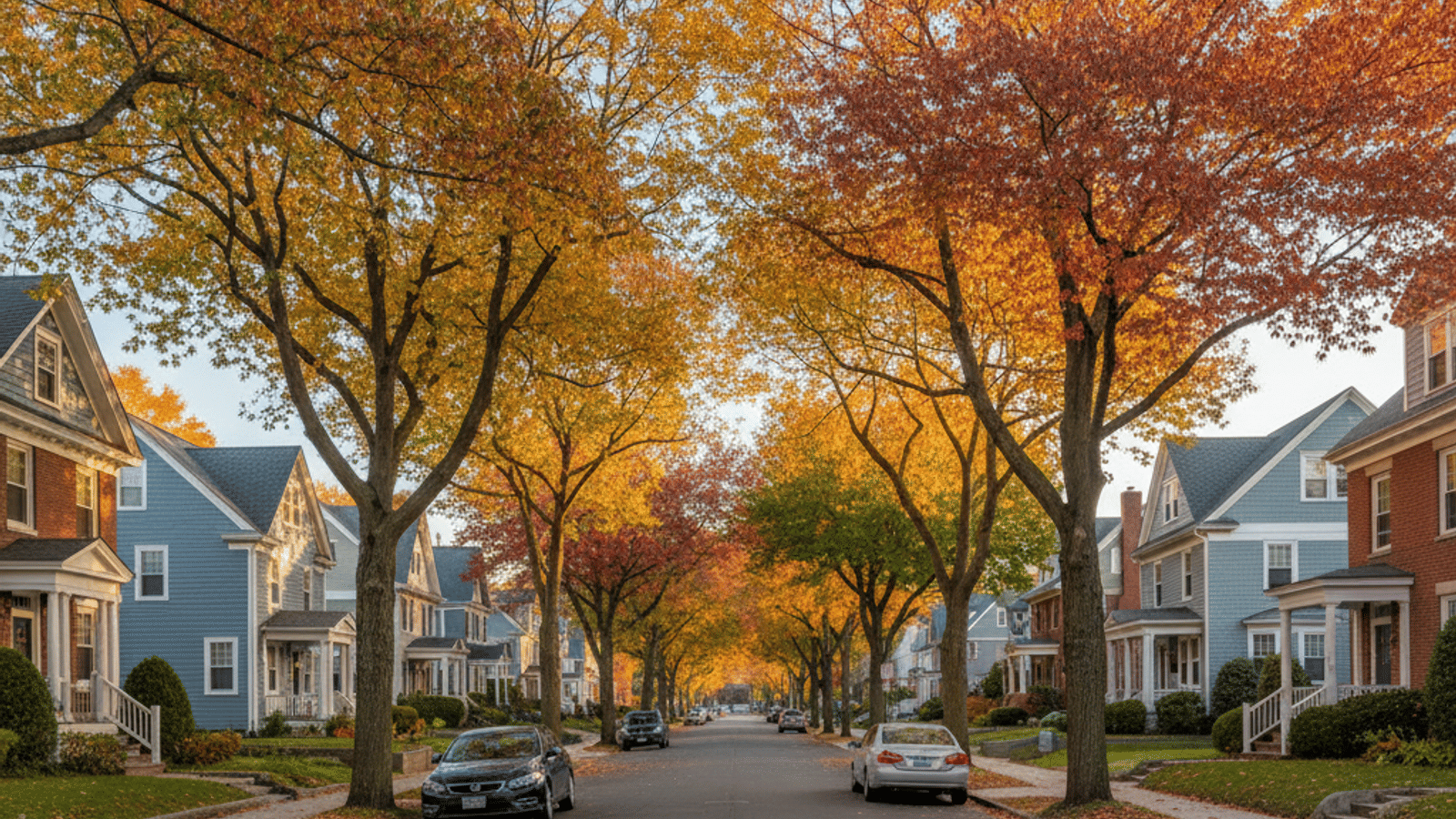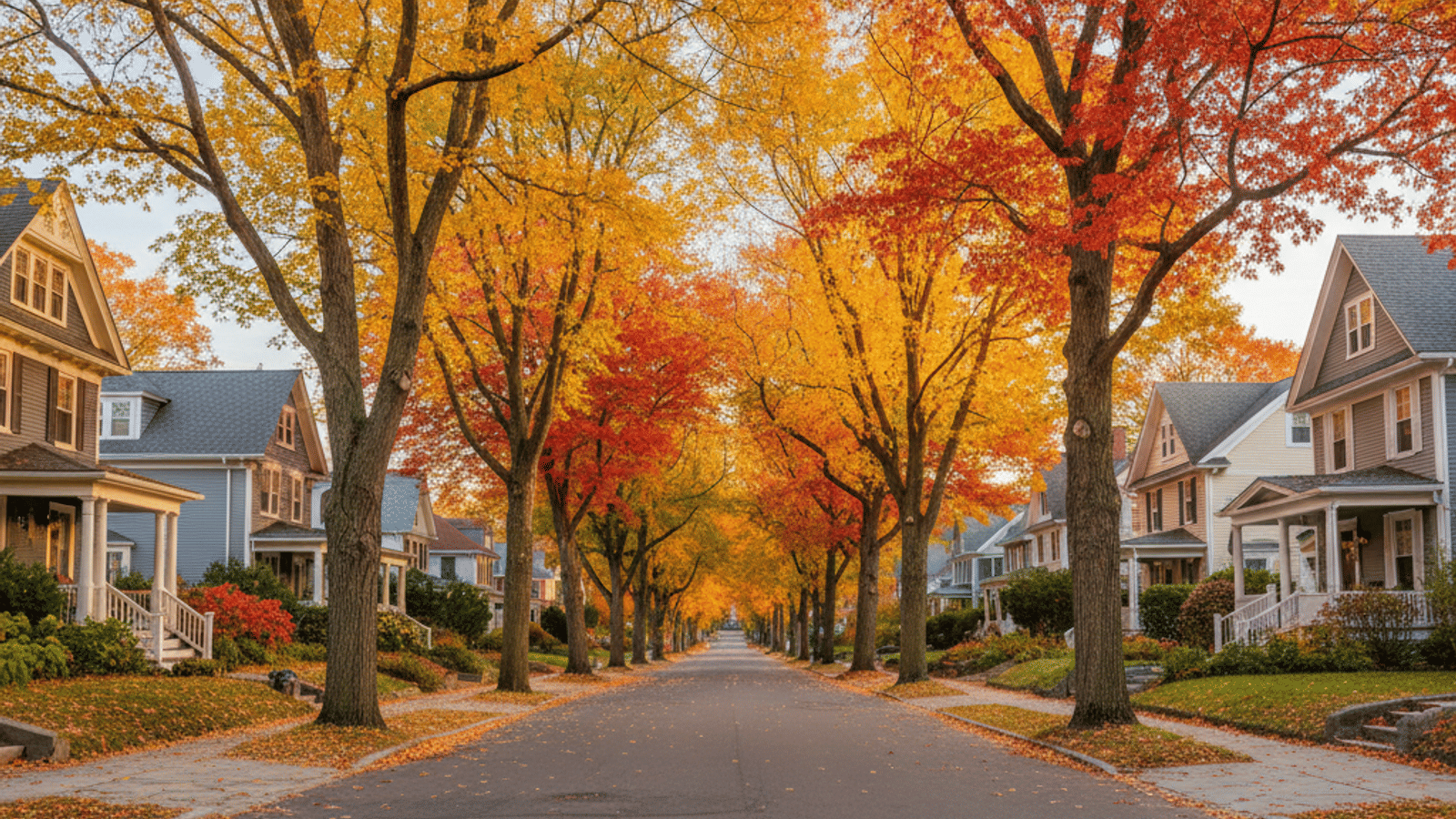Overview of Belmont
Introduction to Living in Belmont, MA
Belmont is in Middlesex County, just nine miles west of Boston.
Spend an afternoon in Belmont Center and you’ll hear Belmont residents trading school gossip over coffee while kids dash toward the commuter‑rail platform.
Median household income has climbed to $178,188, according to, so many households can handle the higher cost of living while still joining the Belmont Country Club or cheering the Marauders at Belmont High School.
Geographical Location
Belmont hugs Cambridge and Watertown. Hop the Fitchburg Line in Waverley Square and you’re at North Station before your playlist ends. Neighborhood flavors range from Belmont Hill’s winding lanes to the tidy colonials near Cushing Square.
Living in Belmont means quick walks to recreational areas like Beaver Brook Reservation and easy bike rides along the 4.7‑square‑mile town grid.
Cost of Living in Belmont
The cost‑of‑living index sits at 206, or 106 percent above the national average.
Housing is the real driver, with median home prices topping one million dollars—one reason “homes for sale in Belmont” sees heavy search volume each spring.
Even with a higher cost of living, the town’s schools, short commute, and village vibe keep demand strong.
Belmont Crime Breakdown
Property Crime
NeighborhoodScout lists 225 property crimes last year, a rate of 8.37 incidents per 1,000 residents.
Theft, such as porch packages or rummaged‑through cars, makes up most cases, while burglary and vehicle theft remain uncommon.
Your chance of becoming a victim of property crime in Belmont is about 1 in 119, slightly lower than the Massachusetts average.
Violent Crime
Violent crime stays low. The same NeighborhoodScout dataset shows 16 violent incidents, or 0.60 per 1,000 residents.
That figure is more than 80 percent lower than the national average, giving Belmont a violent crime rate that many people call “statistically rare.”
A resident in Belmont faces roughly a 1 in 1,680 chance of being the victim of a violent crime.
Other Crime
CrimeGrade slots Belmont at a B‑ B-grade for “other” offenses, with vandalism and identity‑theft reports pushing the non‑violent category to 11.29 incidents per 1,000 residents.
Most of these calls cluster near busy corridors where many people visit, not on the quiet residential streets.
Trends in Crime Rates in Belmont
Year‑over‑year totals ticked up about six percent, driven mainly by property offenses that mirror economic bumps in Greater Boston.
Even with the uptick, Belmont crime rates remain roughly 60 percent below the national average, and violent crime has held steady for several years.
Comparing Crime Rates: Belmont vs. Nearby Cities
Compare Belmont Crime Rates with Massachusetts
Belmont’s overall crime rate is 9 per 1,000 residents, versus 14.15 per 1,000 statewide.
Violent crime comes in at 0.60 per 1,000 compared with Massachusetts’ 3.14 per 1,000, underscoring why Belmont ranks among the safest places to live in the Bay State.
Crime Rate Comparison with Nearby Neighborhoods
CrimeGrade tables rank Belmont Hill and Cushing Square West in the safest tier, while East Belmont—bordering Watertown—shows more calls largely because of heavier retail traffic.
Neighboring Cambridge earns a D+ overall grade, Arlington a B+, and Newton a B‑, so Belmont crime rates compare favorably with nearby cities.
Safety Measures and Resources
Chance of Being a Victim of Crime in Belmont
Blending violent, property, and other categories, Belmont posts about 9 total crimes per 1,000 people, meaning a 1 in 111 chance of being a victim, well less than the national average and on par with the best places to live in Massachusetts.
Role of the Belmont Police Department
The Belmont Police Department Strategic Plan notes an average of 47 sworn officers over the past decade, plus civilian staff and dispatchers, roughly 2.3 officers per 1,000 residents, focused on community policing and mental‑health co‑response.
Community Safety Initiatives
Belmont PD partners with Advocates for jail diversion, hosts bike‑registration clinics, and maintains an interactive Belmont crime map that highlights the safest areas in green so residents can interpret detailed crime rates street by street.
Living in Belmont: Is it a Safe Place to Live?
Daily life supports the numbers. Parents linger in Belmont Center after dinner, joggers loop Clay Pit Pond at dusk, and teens trek to Belmont Hill School study groups.
Crime in Belmont varies by neighborhood, yet even busier corridors record totals less than the national average, and the property crime rate in Belmont seldom spikes outside the holiday package season.
Belmont also offers strong schools, recreational areas, and a low overall crime rate that attracts people looking for a safe place to live.
Conclusion and Recommendations
Summary of Crime Statistics
FBI crime data, NeighborhoodScout analytics, and CrimeGrade maps show Belmont has a crime rate that is lower than both state and national benchmarks.
Violent crime hovers at 0.60 per 1,000 residents, property crime rests under nine per 1,000, and the overall crime rate in Belmont beats nearby cities like Cambridge and Somerville.
Future Outlook for Crime in Belmont
With rising median household income and police strategies centered on mental‑health first responses, Belmont maintains a trajectory toward even lower costs of crime in Belmont.
Ongoing collaboration between Belmont residents and law enforcement should keep the town in the safest areas bracket for years to come.
Belmont Safety FAQs
How do Belmont crime rates compare to the national average?
Belmont logs about 904 incidents per 100,000 people, which is roughly 60 percent less than the national average. Violent crime is more than 80 percent lower nationwide, and the property crime rate in Belmont is about 685 per 100,000, well under national figures.
Which neighborhoods are considered the safest areas in Belmont?
CrimeGrade’s crime map highlights the safest areas in Belmont in green, with Belmont Hill, Cushing Square West, and portions of Belmont Center South recording the lowest detailed crime rates.
Rates are measured per resident, so quiet residential streets score best even though commercial corridors see the most incidents.
Is Belmont Center safe after dark?
Belmont Center stays active into the evening thanks to cafés and commuters, yet police logs show few violent crimes.
Most calls involve minor thefts or lost‑and‑found property. Because many people visit, raw totals appear higher, but crime per capita remains low, and locals generally feel safe walking after dark.
How do schools influence community safety?
Belmont Public Schools, Belmont High School, and private Belmont Hill School anchor the community.
Engaged parent networks and long‑term residency patterns contribute to low crime per capita, supporting research that stable school communities correlate with lower rates of crime in Belmont.
What steps can new residents take to stay safe?
Lock doors, add motion lights, enroll in Belmont PD text alerts, and consult the Belmont crime map before choosing housing. Meeting neighbors helps you see the most incidents quickly.
Whether you live near Belmont Country Club or Waverley Square, staying plugged into local forums keeps safety top of mind and maintains Belmont’s reputation for low crime.






